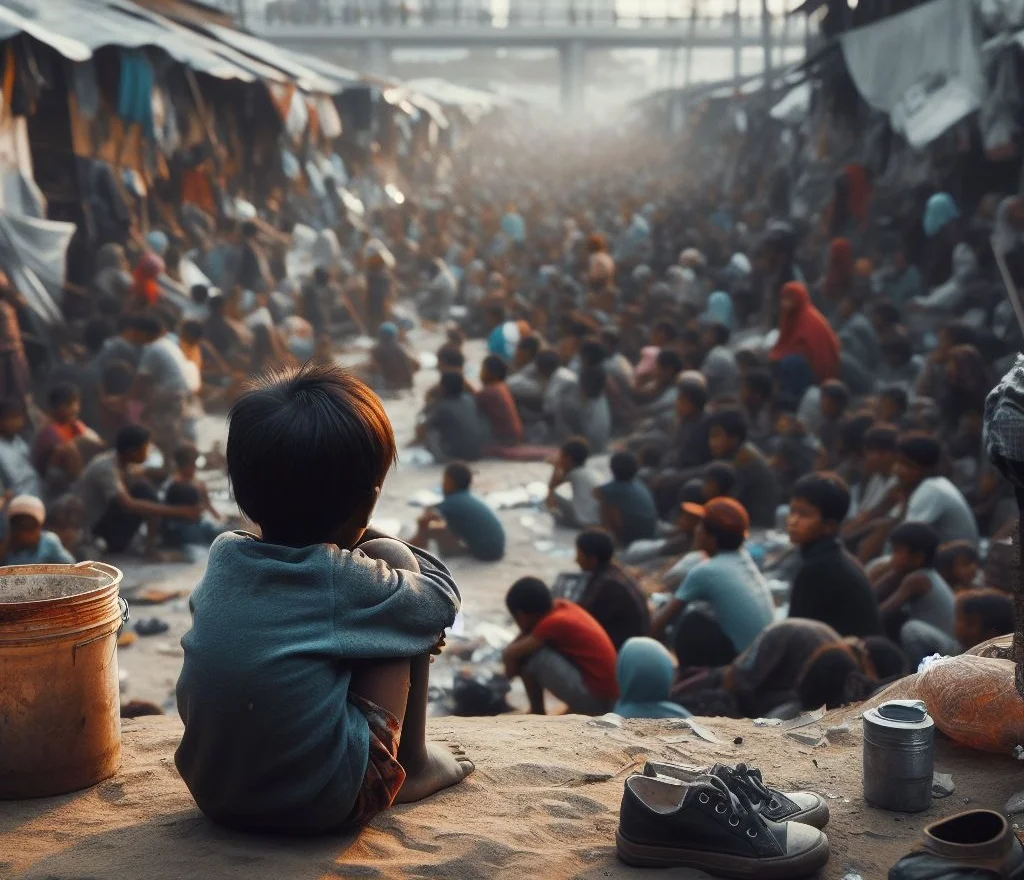New data unveiled by the International Labor Organization (ILO), Save the Children, and UNICEF discloses a stark reality: 1.4 billion children aged 0-15 globally lack any form of social protection, exposing them to the perils of disease, malnutrition, and poverty.
Within low-income nations, the disparity is glaring: fewer than one in ten children in this age bracket benefit from any form of social safety net. This glaring gap underscores the stark difference in coverage between low and high-income countries.
Child benefits, essential for securing the future welfare of children, come in the form of cash payments or tax credits. These benefits play a pivotal role in poverty alleviation, facilitating access to vital healthcare, education, and sanitation services. Moreover, they serve as a lifeline during crises, fostering socio-economic resilience.
The repercussions of inadequate social protection are dire, leaving countless children deprived of fundamental resources and services, thereby perpetuating cycles of poverty and thwarting their potential.
The joint appeal from the three organizations implores governments worldwide to prioritize the implementation of comprehensive social protection mechanisms, including universal child benefits.
Over a span of 14 years, global access to child benefits has seen a modest uptick, from 20% in 2009 to 28.1% in 2023. However, progress remains uneven, with low-income countries lagging significantly behind, boasting coverage rates of a mere 9%.
Alarming disparities are observed concerning countries' vulnerability to climate change impacts, with coverage rates for children in highly vulnerable nations trailing by a third compared to those deemed less susceptible.
The gravity of the situation is underscored by Natalia Winder Rossi of UNICEF, who highlights that globally, 333 million children endure extreme poverty, while nearly 1 billion grapple with multidimensional poverty, jeopardizing the attainment of Sustainable Development Goals.
To address the widening chasm in child benefit coverage, Save the Children, ILO, and UNICEF introduce the Global Child Benefits Tracker, an online tool aimed at monitoring access to benefits and advocating for policy reforms to bridge existing gaps.
David Lambert Tumwesigye of Save the Children International stresses the indispensable role of child benefits in ensuring children's rights and fostering resilient economies for the future.
In a bid to achieve universal social protection, policymakers and donors are urged to prioritize rights-based, gender-responsive, and inclusive social protection systems, while bolstering sustainable financing to combat child poverty and enhance the well-being of future generations.
Photo: Digital Information World - AIgen
Read next: Bill Gates Urges the Richest Countries to Donate to the Global South
Within low-income nations, the disparity is glaring: fewer than one in ten children in this age bracket benefit from any form of social safety net. This glaring gap underscores the stark difference in coverage between low and high-income countries.
Child benefits, essential for securing the future welfare of children, come in the form of cash payments or tax credits. These benefits play a pivotal role in poverty alleviation, facilitating access to vital healthcare, education, and sanitation services. Moreover, they serve as a lifeline during crises, fostering socio-economic resilience.
The repercussions of inadequate social protection are dire, leaving countless children deprived of fundamental resources and services, thereby perpetuating cycles of poverty and thwarting their potential.
The joint appeal from the three organizations implores governments worldwide to prioritize the implementation of comprehensive social protection mechanisms, including universal child benefits.
Over a span of 14 years, global access to child benefits has seen a modest uptick, from 20% in 2009 to 28.1% in 2023. However, progress remains uneven, with low-income countries lagging significantly behind, boasting coverage rates of a mere 9%.
Alarming disparities are observed concerning countries' vulnerability to climate change impacts, with coverage rates for children in highly vulnerable nations trailing by a third compared to those deemed less susceptible.
The gravity of the situation is underscored by Natalia Winder Rossi of UNICEF, who highlights that globally, 333 million children endure extreme poverty, while nearly 1 billion grapple with multidimensional poverty, jeopardizing the attainment of Sustainable Development Goals.
To address the widening chasm in child benefit coverage, Save the Children, ILO, and UNICEF introduce the Global Child Benefits Tracker, an online tool aimed at monitoring access to benefits and advocating for policy reforms to bridge existing gaps.
David Lambert Tumwesigye of Save the Children International stresses the indispensable role of child benefits in ensuring children's rights and fostering resilient economies for the future.
In a bid to achieve universal social protection, policymakers and donors are urged to prioritize rights-based, gender-responsive, and inclusive social protection systems, while bolstering sustainable financing to combat child poverty and enhance the well-being of future generations.
Photo: Digital Information World - AIgen
Read next: Bill Gates Urges the Richest Countries to Donate to the Global South

